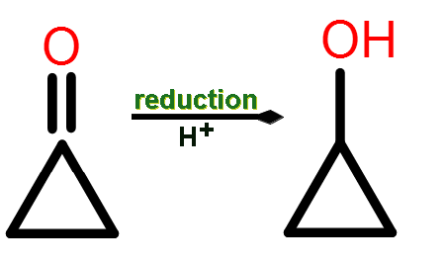What is Industrial Garnet and its Applications
Origin and Occurrence of Industrial Garnet
Garnet is a group of silicate minerals that form isometric crystals. Industrial garnet occurs mostly as crystals or masses in metamorphic rocks derived from schist, gneiss, and granite. The three most common garnet types used for industrial purposes are almandine, spessartine, and pyrope. Almandine garnet forms primarily from metamorphosed iron-rich sediments and is the most abundant type. Spessartine garnet forms from manganese-rich compositions. Pyrope garnet forms from magnesium-rich compositions. Major producers of industrial garnet include India, Vietnam, and South Africa. Countries like the United States and Malaysia also mine smaller quantities of industrial garnet.
Physical and Chemical Properties of Industrial Garnet
Industrial garnet is prized for its hardness, durability, chemical inertness, and angularity. On Mohs scale of hardness, garnet registers between 6.5 to 7.5 which makes it quite durable and long-lasting in applications involving friction and wear. Due to its chemical composition consisting primarily of oxygen, silicon, aluminum, calcium, and iron, garnet is highly resistant to weathering, moisture, and acid corrosion. Its isometric structure results in garnet crystals with characteristic sharp, angular surfaces ideal for abrasive blasting and water jet cutting applications. Garnet’s specific gravity ranges from 3.5 to 4.1 depending on composition, which allows for effective separation from lighter impurities. Its moderate hardness is well-suited for work on metals, glass, ceramics without causing damage.
Uses of Industrial Garnet in Abrasives Industry
Abrasive blasting and water jet cutting are the largest end uses for industrial garnet, accounting collectively for over 80% of global garnet production. Garnet grit is used to blast clean metal surfaces, remove rust and old paint before refinishing, texture concrete, and for other heavy-duty abrasive applications. Garnet’s hardness, durability and angular crystals make it effective for removing coatings without damaging substrates. In water jet cutting, high-pressure water jets laden with garnet granules are used to cleanly slice through metals, stone, composites and more. Garnet is also used to make sandpaper, abrasive wheels, grinding compounds and other coated and bonded abrasives for finishing and polishing of metals, plastics and wood. Other industrial garnet applications include water filtration media, abrasive powders for drilling muds, glass etching compounds, and roofing abrasive strips.
Garnet Used for Waterjet Cutting of Stone and Metal
Waterjet cutting technology has revolutionized stone fabrication and precision metal cutting through its ability to quickly slice though materials without generating heat. While plain water is used for softer materials, addition of an abrasive is needed for harder substrates like granite, marble, tool steel and titanium alloys. Garnet has emerged as the abrasive of choice for most waterjet applications due to a unique combination of properties. Its durability resists wear better than alternative abrasives, allowing longer nozzle life and fewer replacements. Garnet’s hardness is well-suited for cutting a wide variety of materials without dulling or fracturing. Its sharp, angular crystals provide the “bite” needed for efficient material removal. Garnet performs consistently across a wide range of water pressures and flows. As a result, garnet offers precision cutting capabilities along with high productivity and process reliability demanded by industrial waterjet users.
Garnet Grit Blasting Removes Coatings Without Substrate Damage
Abrasive blasting is a mechanical surface preparation method employing compressed air or centrifugal wheels to propel abrasive grit onto a surface. The impact and scrubbing action removes unwanted coatings, preps a surface for painting or bonding, or finishes metals. Garnet grit blasting has emerged as a versatile yet gentle method suitable for a wide range of indoor and outdoor industrial applications. Its moderate hardness level (between 6.5-7.5 Mohs) allows garnet to cut quickly through paint, powdercoating, or rust without damage to substrates like steel, aluminum or concrete which have greater hardness. Garnet blasting produces a uniformly smooth, profiled surface with minimal substrate removal compared to other abrasives like steel grit or slag. Garnet residue presents no respiratory hazards and is recyclable for reuse. As a result, garnet has become the preferred abrasive grit for maintenance and restoration work where substrate protection is a concern.
Environmental and Economic Benefits of Using Industrial Garnet
Industrial garnet offers advantages from both economic and environmental standpoints. As a naturally occurring mineral, garnet reserves are abundant and sustainable with minimal environmental impact from mining. Garnet can be reused many times before being replaced, providing a lower total cost of ownership compared to other abrasives which wear out faster. When used in abrasive blasting or waterjet applications, garnet residue is non-toxic, inert and creates no special disposal concerns. Garnet performs cleaning, prepping or cutting functions using mechanical abrasion only without hazardous chemicals or thermal effects. As a result, garnet avoids environmental regulations associated with abrasives releasing toxic dusts or requiring containment of waste byproducts. Looking ahead, garnet reserves are widely distributed globally so supply sources will remain stable to meet growing industrial demands for this versatile, eco-friendly abrasive mineral.



